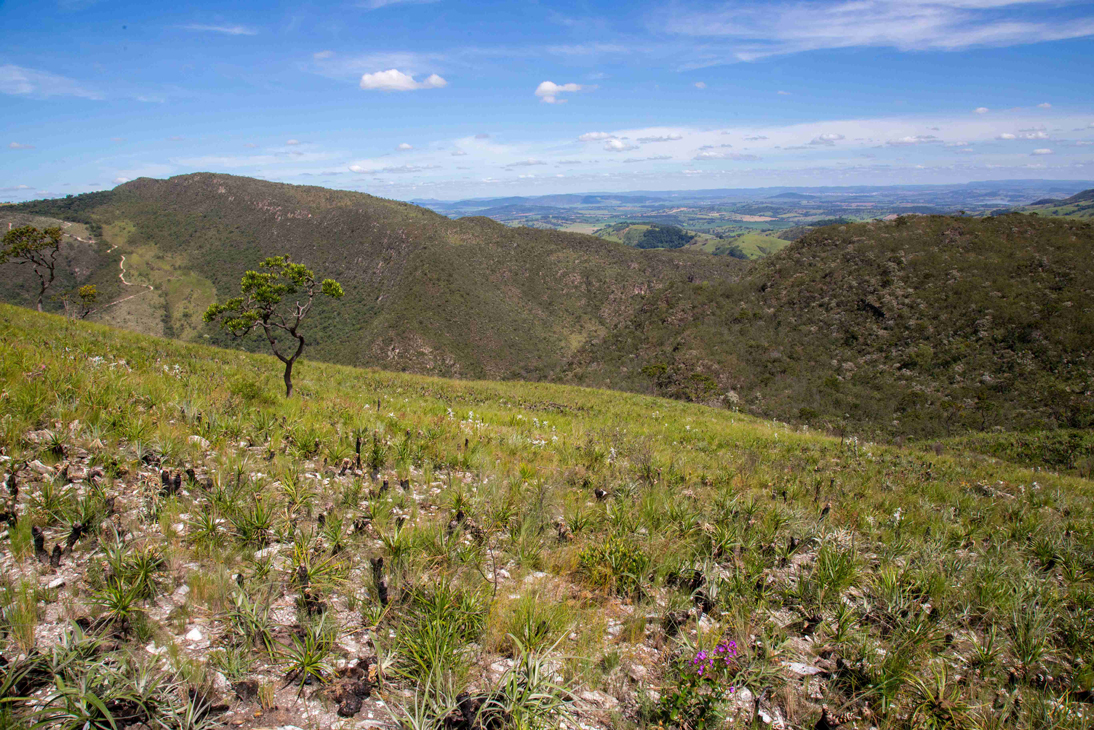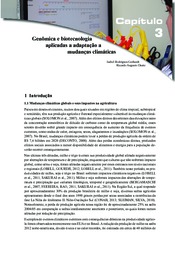Microorganisms found in rupestrian fields can help in the adaptation of cash crops to climate change
Microorganisms found in rupestrian fields can help in the adaptation of cash crops to climate change
The plant microbiome present in Brazilian rupestrian fields, which are environments that are poor in nutrients and water availability, may be storing important information for the development of cash crops that are more tolerant to climate change. A paper published on July 31 in the journal Scientific Data, from the Nature group, introduces the first data from the work of genetic sequencing of microorganisms associated with the Velloziaceae family of plants species, which naturally grow in rupestrian fields. The role of the microorganisms identified by the study is still little known, but according to the scientists, the new results can help to decipher the plants' strategies of survival under extreme conditions and advance in the adaptation of such mechanisms for species of agricultural interest.
The paper's authors include researchers from Embrapa and the State University of Campinas (Unicamp) who work with the Genomics for Climate Change Research Center (GCCRC), created in 2017 through a partnership between the two institutions and funded by the São Paulo State Research Support Foundation (Fapesp). The Center is an expansion of the Mixed Research Unit in Genomics Applied to Climate Change (UMiP GenClima), an initiative by Embrapa and Unicamp established five years earlier, in 2012, with the goal of developing biotechnological solutions for the adaptation of crops to the future scenarios of high temperatures and water scarcity.
"In the rupestrian fields the plants need to survive long periods of drought, and grow in shallow, rocky soils that are also among the world's poorest in phosphorus. The plants are imposed severe limitations to their development. We certainly have a lot to learn from them", explains Isabel Gerhardt, a researcher at Embrapa Agricultural Informatics, one of the authors of the paper.
The Brazilian rupestrian fields are located in rocky outcrops in the central and Eastern regions of Brazil, especially throughout the Cadeia do Espinhaço mountain range. For the Embrapa Agricultural Informatics researcher Ricardo Dante, the scientific potential of the biodiversity present in such environments is still underexplored. Despite occupying less than 1% of the Brazilian land area, Brazilian rupestrian fields host more than 5,000 plant species, of which more than 40% are endemic to such ecosystem.
Dante also highlights the approach used in the study, which considered the analysis of entire microbial genetic material available in the environment known as metagenomics. It helps to better understand the plant's interaction with the community of microorganisms present and its response to drought, heat and nutrient scarcity. "œThere are already several studies on the ecology and ecophysiology of rupestrian field species, but it is the first time on microbial communities and their relationship with survival in such stressful conditions", explains Rafael Soares Correa de Souza, a GCCRC postdoctoral student and Fapesp scholarship holder.
The research assessed the microbiomes of the species Vellozia epidendroides, which takes up areas where the soil is not so deep, and Barbacenia macrantha, which grows in exposed rocks. In areas near the Serra do Cipó National Park, in Minas Gerais, they collected samples of roots, stems, leaves and soils of six individuals of each species. After the processing for DNA extraction, the material was submitted to the Joint Genome Institute (JGI), an important consortium of American laboratories under the United States Department of Energy.
Through last-generation sequencing technologies, based on bioinformatics platforms and access to large public databases, it was possible to identify and reveal the quantity of microorganisms present in the samples. The sequencing generated a total of 192 gigabytes (GB) of data, which are now stored and available for public access on JGI's web portal. "We have found an absurd amount of fungi that had been completely unknown to science", states Antonio Pedro Camargo, a GCCRC PhD candidate, Fapesp scholarship holder and first author of the article. "In the case of phosphorus-poor soils there are no mycorrhiza, and thus we could be in front of an important clue to how these plants manage to extract the phosphorus from the environment", Camargo explains.
Ricardo Dante stresses the joining of different efforts and expertises since the establishment of UMiP GenClima, to reach results aiming at the generation of new biotechnological assets for sustainable agricultural production. Since 2013, the team led by the professor of the Institute of Biology Paulo Arruda, GCCRC's coordinator, has been conducting studies that resulted in the full mapping of the microorganism communities associated with sugarcane crops. On Embrapa's part, Dante and Isabel Gerhardt have already been studying the genomes of species that are endemic to rupestrian fields since 2016, in a multidimensional approach.
"These results are valuable. Now there is the long-term work of characterizing the roles played by such microorganisms identified in the study and their potential contribution to advance in the adaptation of crops of interest to stresses", Dante adds.
The paper's authors also include researchers from the Federal University of Pará (UFPA) and the University of Western Australia. The full version of the paper can be read here.
Translation: Mariana Medeiros
Graziella Galinari (MTb 3863/PR)
Embrapa Agricultural Informatics
Press inquiries
informatica-agropecuaria.imprensa@embrapa.br
Phone number: +55 19 3211-5806
Paula Drummond de Castro (collaboration)
Genomics for Climate Change Research Center
Further information on the topic
Citizen Attention Service (SAC)
www.embrapa.br/contact-us/sac/


